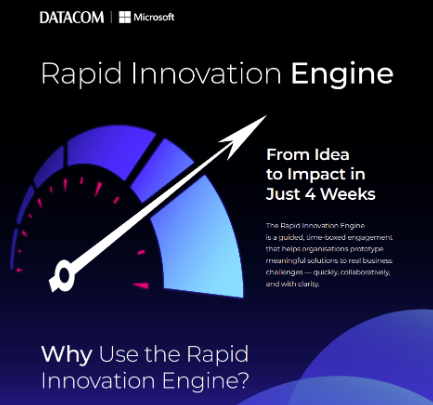How can generative AI help my business?
When it comes to implementing AI into their businesses, leaders are grappling with balancing cost against productivity gains against any potential legal issues

Depending on the sector your business is in and its maturity, AI may mean one of many different things. Those working in manufacturing or the IT supply chain might have become used to using machine learning (ML) or statistics rooted in algorithms for automation and data analytics.
On the other hand, the meteoric rise of generative AI in recent years has seen AI explored as a solution for marketing, coding, and productivity improvements. For businesses chasing these gains, large language models (LLMs) are an important area to understand.
And to those hoping for improvements in customer service on a grand scale, retrieval augmented generation (RAG) is gaining importance; it can be implemented to make generative AI respond much more like a real human being.
However, there are common issues too for businesses with AI, such as AI hallucinations. These occur when AI models confidently respond to user queries with falsehoods, either due to the limited scope of their training data or simply as a statistical error.
There are also concerns over how many jobs will be affected by AI, with an International Monetary Fund (IMF) report concluding earlier this year that 40% of jobs around the world will be impacted.
For a large number of companies and organizations, AI is already a game-changer. In some sectors, it is already critical to drive productivity, find cost savings, streamline workflows, and create internal efficiencies.
One growing area for its use right now is related to the increasing availability of photos and videos taken by drones in the sky and robots on the ground, or even using machinery underwater. This footage influences how companies work, research, plan, and build.
Sign up today and you will receive a free copy of our Future Focus 2025 report - the leading guidance on AI, cybersecurity and other IT challenges as per 700+ senior executives
By adopting a type of AI called computer vision, such as 3D LiDAR technology, businesses can use the stills and films for quality control, security, and safety, as well as to remotely check whether there are problems with any equipment.
Manish Jethwa, chief technology officer at the UK’s national mapping service, Ordnance Survey (OS), suggests computer vision is a key tool for the body, often used in conjunction with ML to extract required features from its mapping photos. This is a process that would otherwise take “a large group of trained professionals”, he says.
Multimodal generative AI models can be layered on top of traditional AI models to help computer vision go further. In the past year, Google has announced an AI assistant for accessibility – Project Astra – and OpenAI has partnered with the app Be My Eyes to help AI voice directions and visual descriptions for blind and visually impaired users.
Faster adoption of generative AI
For many organizations looking into AI right now, it may seem like generative AI is the be-all and end-all of the technology. While the above shows that this isn’t the case, there’s no doubt that businesses are already realizing the benefits of generative AI.
Jethwa also recognizes the crucial role generative AI is now playing for OS and other businesses. “Like everyone else, we’re grappling with the massive change in accessibility to Generative AI capability in the last 18 months,” he explains.
“It offers a tremendous opportunity to revolutionize how users find and access our data. By leveraging its ability to translate natural language into precise data queries, we can make OS data more mainstream, simplifying and enhancing the way users interact with and obtain answers to geospatial questions.”
According to a global report by data and AI solutions company SAS, published in July, only businesses in China lead the UK in the adoption of generative AI. This is followed by the United States and then Australia.
However, nine out of 10 of the senior technology decision-makers questioned admitted they didn’t fully understand the tech and its potential to affect business processes.
Dave Rogers, a partner at Public Digital and an independent advisor for digital transformation at the British Film Institute (BFI) believes things are slowly but surely changing.
“Personal productivity is the most common use of AI in organizations,” he says. “Sometimes, this is almost invisible to users, such as with translation or auto-correct features. However, Generative AI is gradually integrating into the majority of software-as-a-service tools, where it is now used to create ‘first drafts’ or make research quicker and easier.”
Generative AI has also given rise to an explosion in the number of new chatbots for uses such as customer service, while it can also provide actionable intelligence to make decisions simpler and faster.
However, Rogers warns that because AI is still “an experimental technology”, there are a range of legal, technical, and design challenges likely to emerge when it is applied to real-world problems. “It will be hard for businesses to predict in advance if investment in AI will yield enough returns, either through increased value for customers or cost reduction for the business,” he adds.
“This makes investment in AI a gamble. Each time you apply AI to a problem, you might win, or you might lose, and no amount of detailed research and forecasting will take this dynamic away.”
Personalization and experience
Retail is another area where computer vision is being harnessed. Nicholas Borsotto, worldwide AI business lead and head of the Lenovo AI Innovators Program, cites one use case where cameras in-store can automatically draw important insights from watching what customers are looking at and buying.
This can help marketers and sales departments to validate the success of promotions and show how many people engage with the store-based advertising. As mentioned above, generative AI can help enhance this process by providing users with interactive insights on computer vision data, either in the form of text, images, or audio output.
John Cunningham, CTO at experience innovation company Valtech, is seeing businesses use traditional AI to increase back-end efficiency to aid predictive maintenance and downtime reduction. “Applications can calculate the exact moment a component should be replaced with the least impact on production, improving efficiency and getting products to customers faster,” he says.
This can be paired with LLMs to provide leaders with a conversational app capable of natural language processing (NLP), which remains grounded in their data. This is another example of where generative AI can benefit business, by helping to make dense information more explainable and navigable to feed into data-driven decision-making.
But like Rogers, he also has a warning for the C-suite given “the field is changing at such a rapid pace”. He advises the approach to AI from the boardroom should “not bite off more than they can chew”.
Digital twins are another increasing implementation for businesses when it comes to AI. Arash Ghazanfari, UK CTO at Dell Technologies, explains how these “offer a virtual testing ground for products and processes” by simulating real-world scenarios and providing valuable insights into “potential efficiency gains and product enhancements”.
There’s also one further use of AI for businesses that Ghazanfari says we aren’t yet hearing enough about: synthetic data. This is artificially generated through computer algorithms to mirror structures and patterns found in real-world data.
He explains: “Users can take AI and synthetic data to model and test for new insights in scenarios where there is insufficient data, a need to maintain data integrity, or a desire to uphold privacy standards.
“It can be used by cybersecurity teams to create data sets for training and testing their systems against cyberattacks. It also helps maintain privacy for medical research, which often relies on synthetic data.”
Compliance and law
For all businesses considering when to implement AI, there are legal questions to answer.
Rob Cobley, commercial partner at law firm Harper James, says: “AI systems require access to vast amounts of data, increasing the risk of data breaches which can lead to significant legal liabilities and irreparable reputational damage.
“The ever-evolving landscape of law in the AI field makes things even murkier and adds further complexity to compliance, making businesses wary of how they use AI and the potential regulatory penalties when things go wrong.”
David Dumont, partner at Hunton Andrews Kurth, cites another reason for businesses to be cautious, when he points to the EU AI Act; it is the first dedicated comprehensive legal framework on AI.
RELATED WHITEPAPER

“Non-compliance with obligations under the AI Act may subject businesses to heavy fines, reputational damages, market intervention (e.g., having to withdraw their AI from the market) and other types of penalties,” he says.
“It is important that businesses focus on compliance with legal obligations and best practices when developing AI solutions or implementing them in their operations. Public perception of the technology and how businesses use it is being shaped at this stage.”
And Dumont suggests those who don’t take a pragmatic and proactive approach might well suffer. “Businesses who are considered by the public as using AI in an unlawful or unethical manner are likely to have difficulties in gaining back consumer trust in the future,” he warns.
Jonathan Weinberg is a freelance journalist and writer who specialises in technology and business, with a particular interest in the social and economic impact on the future of work and wider society. His passion is for telling stories that show how technology and digital improves our lives for the better, while keeping one eye on the emerging security and privacy dangers. A former national newspaper technology, gadgets and gaming editor for a decade, Jonathan has been bylined in national, consumer and trade publications across print and online, in the UK and the US.

